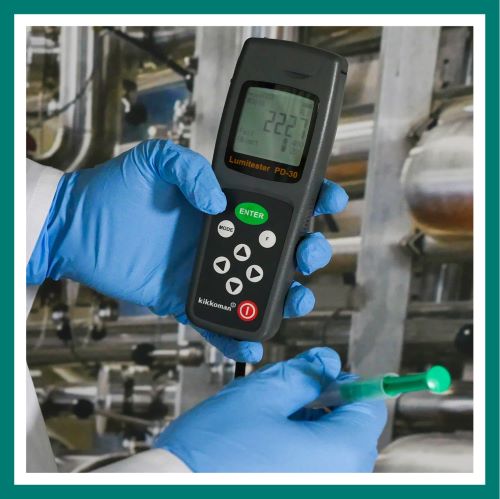food monitoring
-
Posted: December 09, 2019Read more »
Discussions with a range of food industry professionals in Australia has left little doubt; ATP testing has its place in a robust hygiene process, but it has its limitations, and it isn’t perfect – why?
Research by renowned biochemistry company Kikkoman Biochemifa has shed some interesting light on the process:
When you swab for ATP, you are only getting a third of the picture.
ATP testing is all based around a slightly flawed assumption- that ATP is a stable molecule that remains unchanged within organic residue.
In reality, ATP is easily hydrolysed to ADP and AMP by metabolic processes, heat treatment, or under acidic and alkaline conditions. Simply put, ATP (Adenosine Tri-Phosphate) will release a phosphoryl group to become ADP (Adenosine Di-Phosphate) and again to become AMP (Adenosine Mono-Phosphate).
The result: once food has been exposed to heat, water, acidic or alkaline properties, you may be testing for only a fraction
- Colour Coded Hygiene (17)
- Metal Detection (4)
- Food processing products (33)
- Product Comparisons (31)
- Food Safety (18)
- Procurement (11)
- 5S (5)






